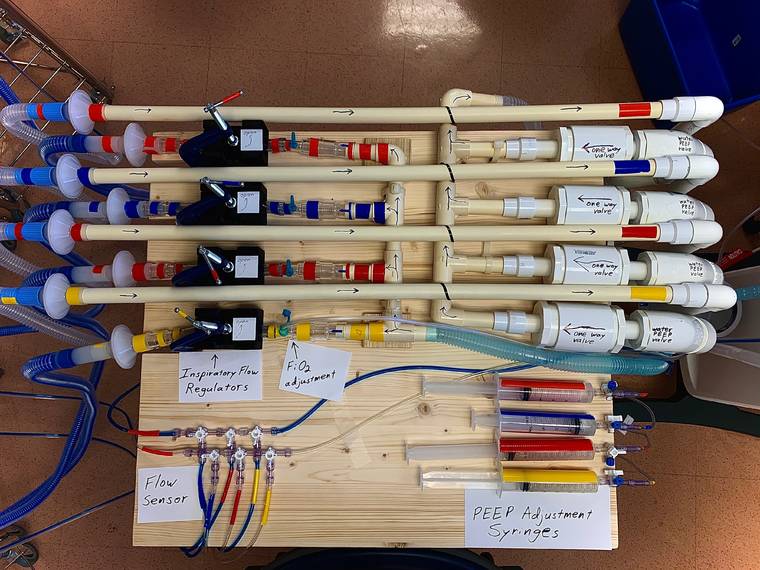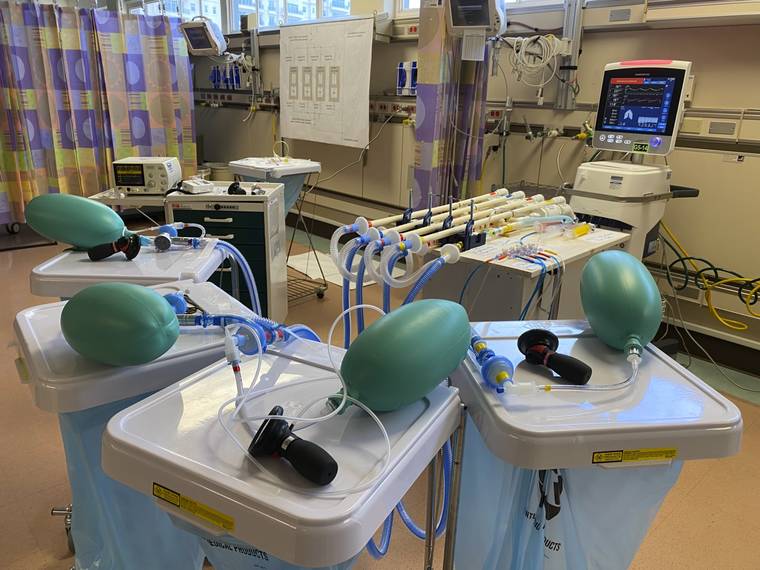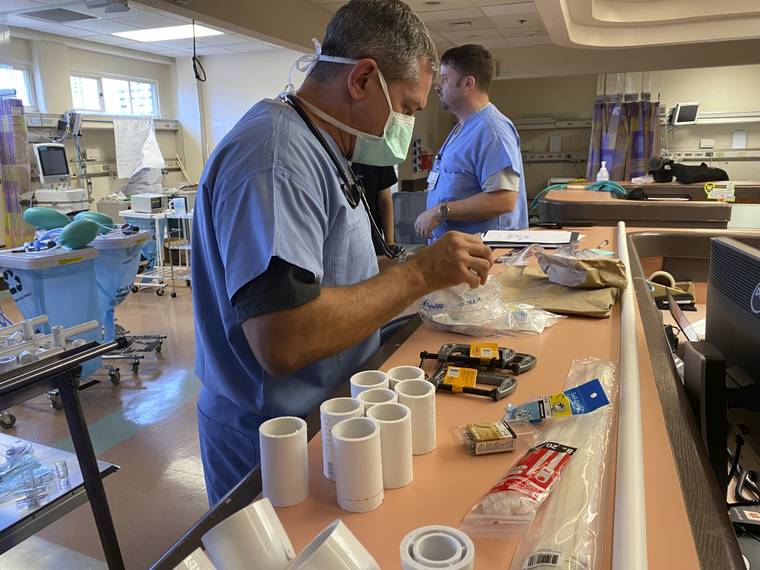University of Hawaii engineers team up with doctors to create medical device to treat four patients with one ventilator

COURTESY OF HAWAII PACIFIC HEALTH
ICU doctors, respiratory therapists and pulmonologists on Oahu are testing the machine.

COURTESY OF HAWAII PACIFIC HEALTH
The reconfigured ventilator can be used as a last resort if Hawaii reaches its ventilator capacity.

COURTESY OF HAWAII PACIFIC HEALTH
An engineer worked on converting a ventilator to provide air to four patients at once.



Engineers at the University of Hawaii and doctors at Hawaii Pacific Health have found a way to use of a single ventilator on four patients at once — quadrupling the respiratory care of those suffering the most severely from COVID-19. Opens in a new tab
The medical device would only be used as a last resort if Hawaii reaches its ventilator capacity, according to Donald Gaucher, anesthesiologist at Straub Medical Center, who led the project.
“We are preparing for the worst,” he said. “What’s unique about our system is that we can customize the ventilation requirements to individualize treatment and care to meet a patient’s specific need.”
The system uses a series of valves to individually regulate oxygen flow, volume and pressures for patients sharing the ventilator. The types of valves used are one-way valves and flow valves, Gaucher said.
The reconfigured ventilator thus far has only been used on “COVID-like model lungs” and not actual patients.
One challenge early in the project was figuring out how to prevent cross-contamination between patients but Gaucher said that issue was revolved by using twice the number of filters.
Don't miss out on what's happening!
Stay in touch with breaking news, as it happens, conveniently in your email inbox. It's FREE!
The collaboration began when Zachary Trimble, associate professor at the UH Manoa Department of Mechanical Engineering, gathered a team of graduate and undergraduate engineering students to work alongside doctors at Hawaii Pacific Health to figure out how to operate from one machine using parts that can be bought from local hardware stores and hospitals.
He said that all the parts for the ventilator added up to about $150.
“It’s interesting to work on a design project that you hope never gets used,” he said. “It’s an emergency solution that it’s important for us to learn how to use or do something like this before we need it. Being able to build a prototype like this is super important for us, so if we do put a human on this we know the safety aspects.”
State officials said at Wednesday’s press conference that there are 535 ventilators in Hawaii and 65 are currently in use, while 97 ICU beds are being used out of 338.
The number of COVID-19 cases has skyrocketed to over 400 since early March.
It’s very important that people who are severely ill with the new coronavirus have a ventilator to live if they need it, Lt. Gov. Josh Green said Wednesday at the press conference .
Russel Woo, pediatric surgeon at Kapiolani Medical Center for Women & Children, said that doctors and respiratory therapists need to be properly trained before using the medical device.
After two weeks of working on the project, Woo said Hawaii Pacific Health has given the green light to train medical professionals across the state. So far, ICU doctors, respiratory therapists and pulmonologists on Oahu have come to test the machine.
“We’re trying to test it as quickly and thoroughly as possible,” he said.



